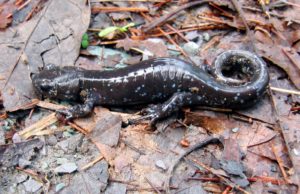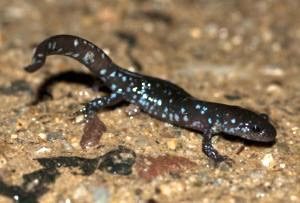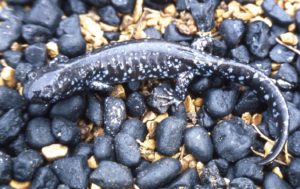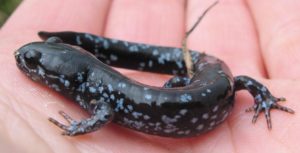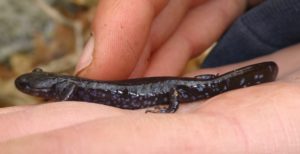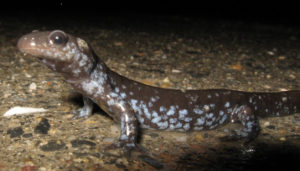Ambystoma laterale
Identification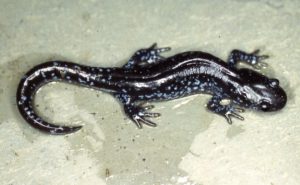
The Blue-spotted Salamander is the smallest of Vermont’s three mole salamanders. Mole salamanders spend most of their lives underground (like moles) except when migrating to and from breeding wetlands, pools, and ponds. They all have sturdy bodies and strong legs. They grow to 5 inches long and are black with small light blue spots on their backs and sides.
This species has historically hybridized with Jefferson Salamanders and a wide variety of hybrids can be found. This sometimes makes identification difficult.
Pure Blue-spotted Salamanders lay single gelatinous eggs, but hybrids reportedly deposit masses with up to 12 eggs.
Get more detailed identification and life history information by downloading the chart here.
You can learn more about this species and see some video footage by checking out this clip from our Rattlers, Peepers & Snappers DVD.
Range/Habitat

[ click image to zoom | download printable PDF ]

[ click image to zoom | download printable PDF ]
Blue-spotted Salamanders are found in lower elevations in or near flood plains, semi-permanent pools, marshes, shrub swamps, or forested red maple/cedar swamps. In Vermont, this species is found primarily in the Champlain lowlands with scattered populations elsewhere.
Status
This species has a state natural heritage rank of S3 (uncommon, localized). Please report all sightings of this species in Vermont. Take photos if possible. Even historic sighting information is useful.
Additional Photos
More Info
- Ambystoma laterale at Animal Diversity website
- Ambystoma laterale at Amphibiaweb
- Ambystoma laterale at the Canadian Herpetological Society website
- Ambystoma laterale in the Vermont Agency of Natural Resources’ Wildlife Action Plan: Amphibian & Reptiles (9/25/2015 draft)
- Ambystoma laterale at the Yale Peabody Museum of Natural History website
Species summary written by Ariel K. McK. Burgess.

